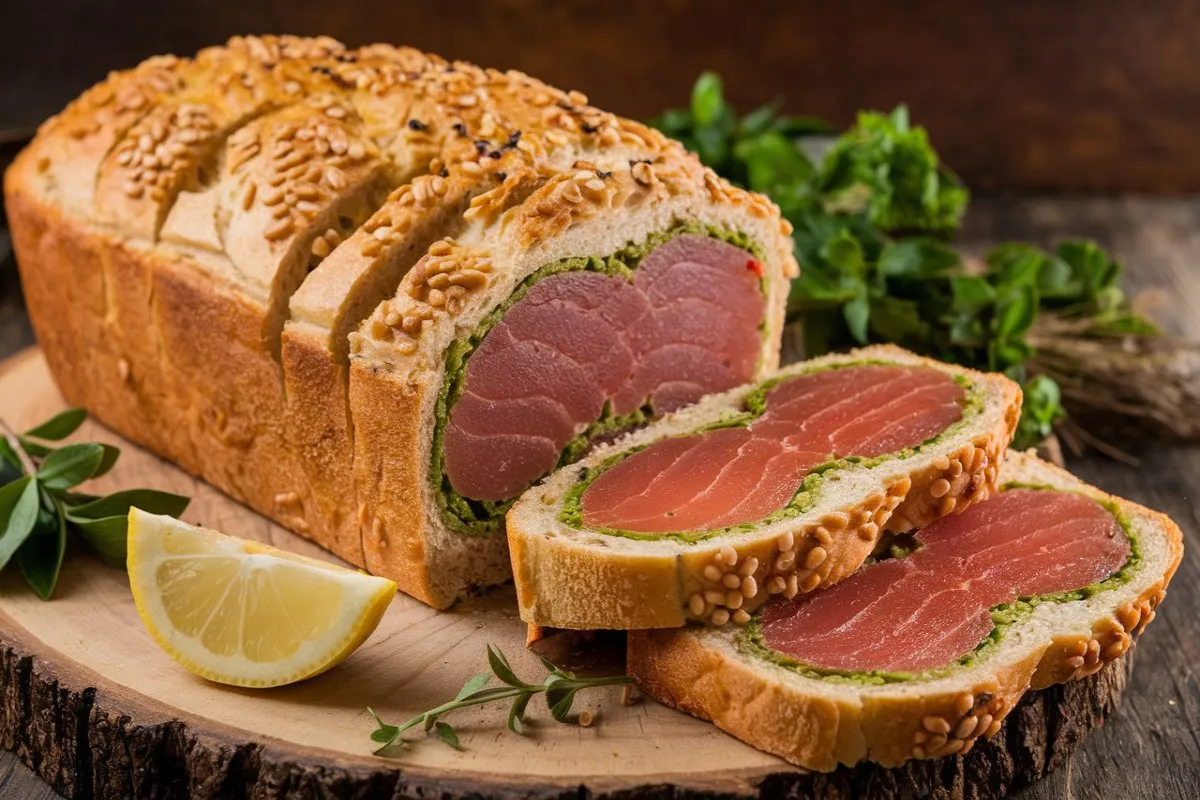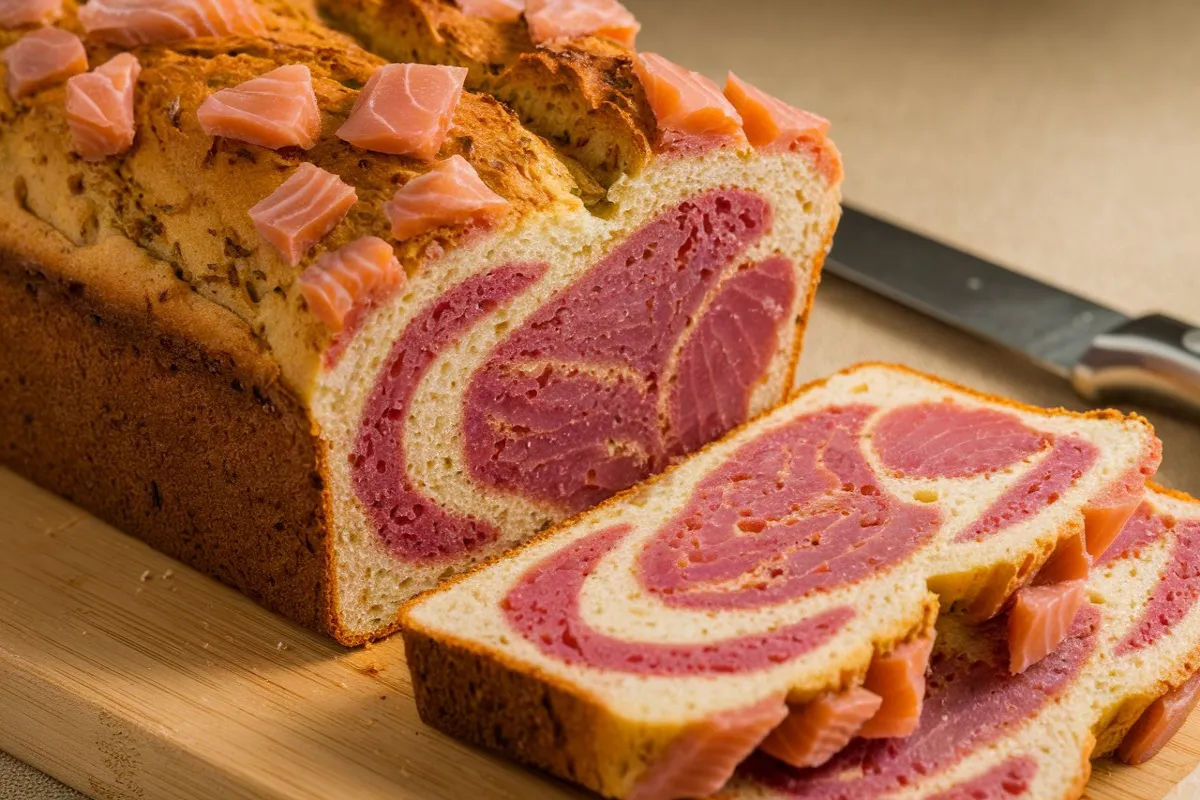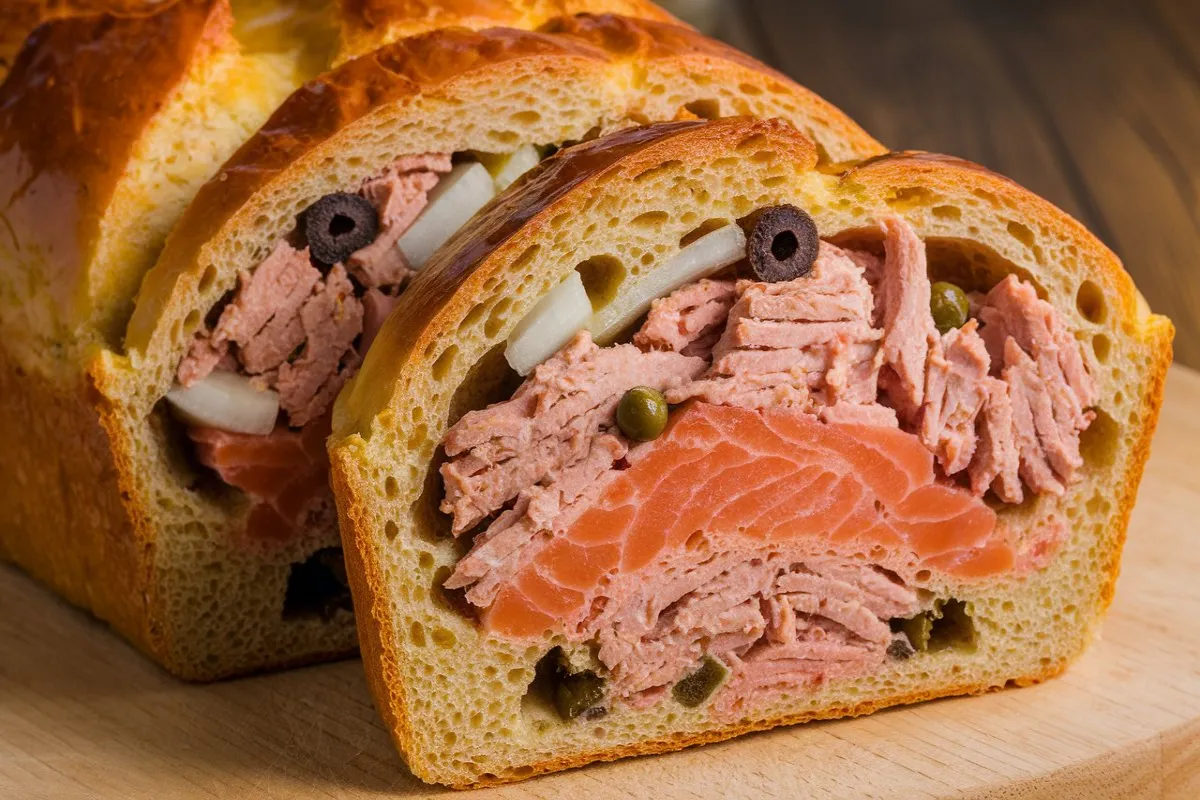Combining tuna and salmon in a single loaf recipe may not be the most conventional approach, but it’s a delicious and nutritious way to enjoy the best of both worlds. Whether you’re looking to elevate your meal prep game or simply experiment with new flavors, this article will walk you through everything you need to know about using both tuna and salmon in the same loaf recipe. From understanding the basics of these two popular fish to perfecting the recipe, we’ve got you covered.
Understanding the Basics of Tuna and Salmon in Loaf Recipes
The Characteristics of Tuna and Salmon
Before diving into the recipe, it’s important to understand the unique characteristics of tuna and salmon. Both are rich in omega-3 fatty acids and high-quality protein, but they differ in flavor and texture.
- Tuna: Tuna has a mild, meaty flavor and a firm texture. It’s often used in salads, sandwiches, and casseroles. Canned tuna, which is commonly used in loaf recipes, is available in various forms, including chunk light and solid white albacore.
- Salmon: Salmon has a richer, more pronounced flavor with a slightly oily texture. Canned salmon, which is also widely available, retains much of the natural fat found in fresh salmon, making it moist and flavorful in recipes.
The combination of tuna and salmon in a loaf brings together the firmness of tuna and the richness of salmon, resulting in a dish that is both satisfying and flavorful. For more insights on the nutritional benefits of these fish, you can explore this Nutritional Benefits of Tuna and Salmon.
Why Combine Tuna and Salmon?
You might be wondering why you should consider combining tuna and salmon in the same recipe. Here are a few reasons:
- Flavor Balance: The mild flavor of tuna pairs beautifully with the richer taste of salmon, creating a well-balanced loaf that isn’t overly fishy.
- Texture Contrast: The firm texture of tuna contrasts with the softer, oilier texture of salmon, adding complexity to each bite.
- Nutritional Boost: By combining both fish, you get a broader range of nutrients, including different types of omega-3 fatty acids, vitamins, and minerals.
The combination of these two fish allows you to enjoy a dish that’s not only tasty but also packed with health benefits.
The Classic Tuna and Salmon Loaf Recipe
Ingredients
To create the classic tuna and salmon loaf, you’ll need the following ingredients:
- 1 can (6-7 ounces) tuna, drained
- 1 can (6-7 ounces) salmon, drained and flaked
- 1 cup breadcrumbs (use gluten-free if needed)
- 2 large eggs, beaten
- 1/4 cup finely chopped onion
- 1/4 cup finely chopped celery
- 1/4 cup mayonnaise (or a dairy-free alternative)
- 2 tablespoons lemon juice
- 1 tablespoon Dijon mustard
- 1 teaspoon dried dill weed
- Salt and pepper to taste
- 1/4 cup chopped parsley (optional, for garnish)
Explanation of Each Ingredient:
- Tuna and Salmon: These are the stars of the dish, providing the primary flavor and texture.
- Breadcrumbs: Help bind the loaf together and add a slight crunch.
- Eggs: Act as a binding agent, helping to hold the loaf together during baking.
- Onion and Celery: Add flavor and a bit of crunch to the loaf.
- Mayonnaise: Adds moisture and richness, preventing the loaf from becoming dry.
- Lemon Juice: Adds brightness and helps to cut through the richness of the fish.
- Dijon Mustard: Provides a tangy kick that complements the flavors of the fish.
- Dried Dill Weed: A classic herb that pairs well with both tuna and salmon.
- Salt and Pepper: Essential for seasoning and bringing out the flavors of the other ingredients.
- Parsley: Optional, but adds a fresh, herby note as a garnish.
Step-by-Step Preparation
Here’s how to make the classic tuna and salmon loaf:
- Preheat the Oven: Preheat your oven to 350°F (175°C). Grease a loaf pan or line it with parchment paper for easy removal.
- Prepare the Fish: Drain the tuna and salmon thoroughly. Flake the salmon with a fork, removing any large bones if present.
- Combine Ingredients: In a large bowl, mix together the drained tuna, flaked salmon, breadcrumbs, beaten eggs, chopped onion, and celery.
- Add Wet Ingredients: Stir in the mayonnaise, lemon juice, and Dijon mustard until well combined. The mixture should be moist but not overly wet.
- Season: Add the dried dill weed, salt, and pepper. Adjust seasoning to taste.
- Shape the Loaf: Transfer the mixture to the prepared loaf pan. Press it down evenly to ensure it holds together during baking.
- Bake: Bake in the preheated oven for 45-55 minutes, or until the loaf is firm to the touch and a toothpick inserted into the center comes out clean.
- Cool and Serve: Allow the loaf to cool in the pan for 10-15 minutes before removing it. Slice and serve warm or at room temperature, garnished with chopped parsley if desired.
Tips for Success:
- Drain the Fish Well: Ensuring the tuna and salmon are well-drained will prevent the loaf from becoming too wet.
- Don’t Overmix: Mix the ingredients just until combined to avoid a dense texture.
- Resting Time: Allowing the loaf to rest after baking helps it firm up, making it easier to slice.
Variations and Substitutions for the Tuna and Salmon Loaf
Flavor Variations
While the classic recipe is delicious, there are many ways to customize your tuna and salmon loaf:
- Herb Variations: Substitute dill with other herbs like thyme, rosemary, or basil for a different flavor profile.
- Spicy Kick: Add a pinch of red pepper flakes or a dash of hot sauce to the mixture for some heat.
- Cheesy Addition: Mix in 1/2 cup of shredded cheddar or Parmesan cheese for a richer, more indulgent loaf.
Substituting Ingredients
This recipe is versatile and can be easily adapted to meet various dietary preferences:
- Gluten-Free: Use gluten-free breadcrumbs to make the loaf suitable for those with gluten sensitivities.
- Dairy-Free: Substitute mayonnaise with a dairy-free alternative like vegan mayo, and skip any cheese additions.
- Fresh or Smoked Fish: If you prefer fresh or smoked fish, you can substitute the canned tuna and salmon with equivalent amounts. Just be sure to cook and flake the fish before using it in the recipe.
For more guidance on cooking with canned fish and how to make substitutions, you can explore this Guide to Cooking with Canned Fish.
Tips for Perfecting Your Tuna and Salmon Loaf
Ensuring the Right Texture
Achieving the right texture in your tuna and salmon loaf is key to its success. Here are some tips:
- Balance Moisture: The loaf should be moist but not soggy. If the mixture seems too wet, add more breadcrumbs. If it’s too dry, add a bit more mayonnaise or a splash of milk.
- Gentle Mixing: Overmixing can lead to a tough loaf. Mix the ingredients just until they come together.
Baking Tips
Proper baking is crucial for a well-cooked loaf:
- Oven Temperature: Bake at a consistent 350°F (175°C). Avoid opening the oven door frequently to maintain even heat.
- Check for Doneness: The loaf is done when it’s firm to the touch and a toothpick inserted in the center comes out clean. If the top is browning too quickly, cover it loosely with aluminum foil during the last 10 minutes of baking.
- Resting Time: Allow the loaf to cool slightly before slicing. This helps it hold its shape and makes slicing easier.
Serving Suggestions and Pairings for Tuna and Salmon Loaf
Ideal Side Dishes
The tuna and salmon loaf pairs well with a variety of side dishes that complement its rich, savory flavors:
- Green Salad: A crisp, fresh salad with a light vinaigrette balances the richness of the loaf.
- Roasted Vegetables: Roasted asparagus, Brussels sprouts, or carrots add a flavorful and healthy side to the meal.
- Mashed Potatoes: Creamy mashed potatoes provide a comforting, hearty accompaniment that pairs well with the fish loaf.
Sauces and Toppings
Enhance the flavor of your tuna and salmon loaf with these sauce and topping ideas:
- Tartar Sauce: A classic pairing that adds tang and creaminess.
- Lemon-Dill Yogurt Sauce: Mix Greek yogurt with lemon juice, dill, and a pinch of garlic powder for a light, refreshing sauce.
- Salsa Verde: A zesty, herbaceous green sauce that brightens the dish.
For more inspiration on which herbs and spices complement fish dishes, check out this Best Herbs and Spices for Fish Dishes.
Frequently Asked Questions (FAQs)
Can I use fresh tuna and salmon instead of canned?
Yes, you can use fresh tuna and salmon in place of canned. Simply cook the fish beforehand—whether by baking, grilling, or poaching—until it’s fully cooked and flakes easily with a fork. After cooking, allow the fish to cool slightly, then flake it into small pieces before incorporating it into the loaf mixture. Keep in mind that fresh fish might have a slightly different texture and moisture content, so you may need to adjust the amount of breadcrumbs or other binding ingredients accordingly.
How long can I store the tuna and salmon loaf in the refrigerator?
The tuna and salmon loaf can be stored in the refrigerator for up to 3-4 days. To store, allow the loaf to cool completely, then wrap it tightly in plastic wrap or aluminum foil, or place it in an airtight container. When you’re ready to enjoy it again, you can eat it cold or reheat individual slices in the microwave or oven. If reheating in the oven, cover the loaf with foil to prevent it from drying out.
Can I freeze the tuna and salmon loaf?
Yes, the tuna and salmon loaf freezes well, making it a great option for meal prep. To freeze:
- Cool Completely: Allow the loaf to cool completely after baking.
- Wrap Tightly: Wrap the loaf (whole or in slices) in plastic wrap, then wrap again in aluminum foil or place in a freezer-safe bag or container.
- Label and Freeze: Label with the date and freeze for up to 2-3 months.
When you’re ready to eat it, thaw the loaf in the refrigerator overnight. Reheat in the oven at 350°F (175°C) until warmed through, or microwave slices until heated.
What other types of fish can be used in this recipe?
While tuna and salmon are the focus of this recipe, you can experiment with other types of fish as well. Here are some alternatives:
- Mackerel: A rich, oily fish that works well in this type of loaf. It has a strong flavor, so it pairs best with more robust seasonings.
- Cod or Haddock: These white fish have a mild flavor and firm texture, making them good substitutes if you prefer a lighter-tasting loaf.
- Sardines: If you enjoy the briny flavor of sardines, they can be used in combination with tuna or salmon for a bolder, more complex taste.
When substituting other fish, be sure to adjust the seasoning to complement the new flavors.
How do I know when the loaf is fully cooked?
The loaf is fully cooked when it is firm to the touch, and a toothpick inserted into the center comes out clean. The internal temperature should reach at least 160°F (71°C) to ensure the eggs are fully cooked and the loaf is safe to eat. If you notice the top browning too quickly, you can cover the loaf with aluminum foil during the last 10 minutes of baking to prevent it from becoming too dark.
Conclusion
Combining tuna and salmon in a single loaf recipe is not only possible, but it also results in a delicious, nutritious, and versatile dish that can be enjoyed in a variety of ways. The blend of tuna’s mild flavor with salmon’s richness creates a balanced and satisfying loaf that is perfect for any occasion, whether it’s a family dinner or meal prep for the week.
By following the tips and techniques outlined in this guide, you can master the art of making a tuna and salmon loaf that is moist, flavorful, and perfectly textured. Don’t be afraid to experiment with different herbs, spices, and ingredients to make the recipe your own.
Whether you stick to the classic recipe or try one of the suggested variations, the tuna and salmon loaf is sure to become a favorite in your kitchen. So, gather your ingredients, preheat your oven, and enjoy the process of creating this delicious dish.
Happy cooking!



